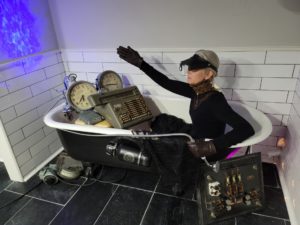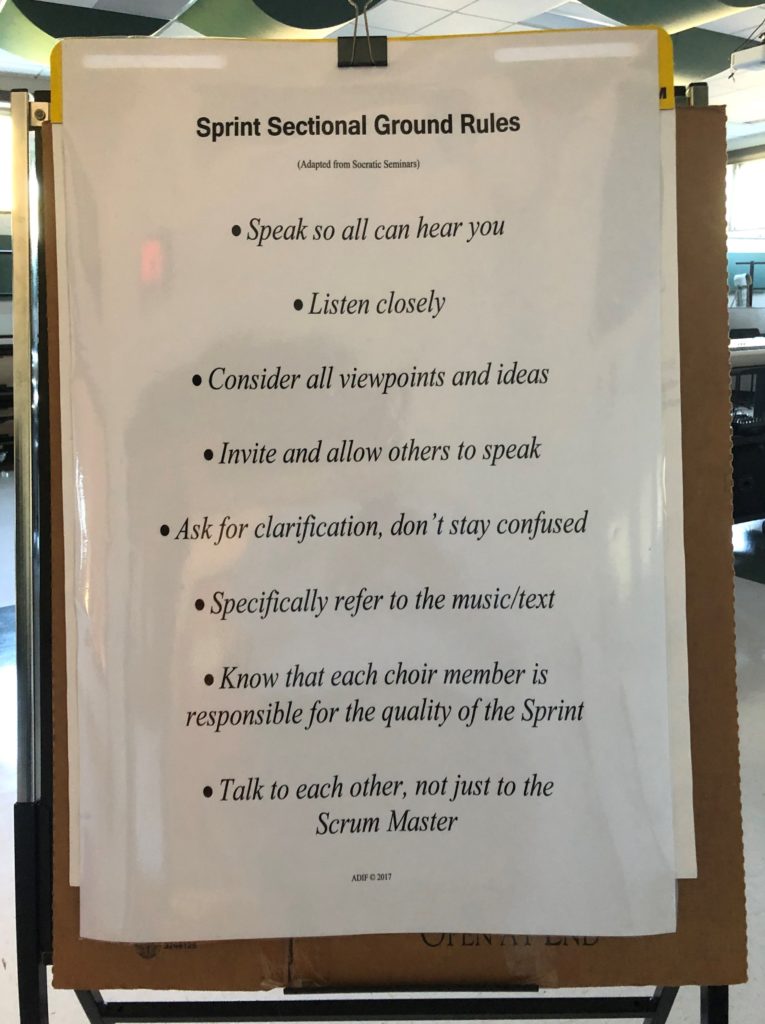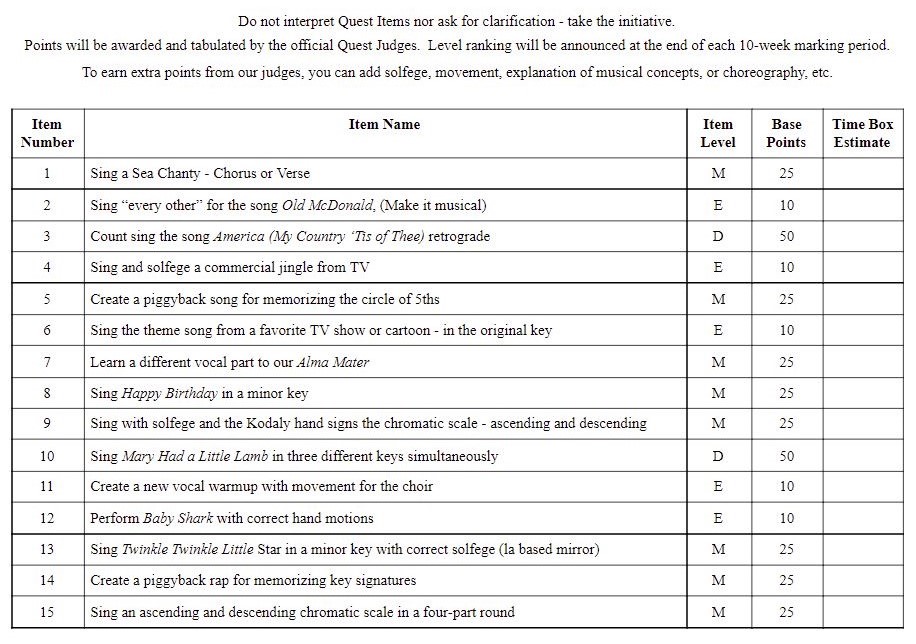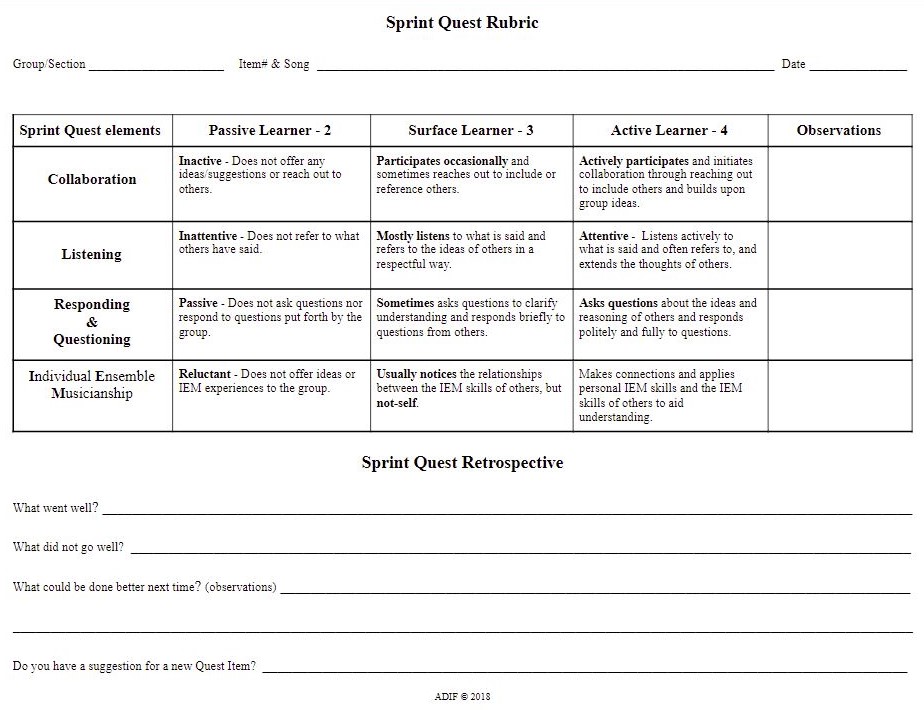Children Singing Nafme Menc Let s Get America Singing Again

Sing the song Happy Birthday in La based small using solfège and hand signs.
Count sing America (My county 'Tis of Thee) retrograde.
Create a piggyback rap to help the choir memorize key signatures.
Perform a four-office round using Kodaly hand signs for the ascending and descending chromatic scale.
Recently, a member of ACDA posted the following question on the American Choral Directors Association Facebook folio: "HELP. I only had my commencement choir rehearsal. It'southward 8 quiet kids, and 2 refused to sing. What do I do?!"
This question actually hit habitation for me because I've been there, and I am at that place again due to COVID and a year of virtual and hybrid choral music. The responses from our colleagues to this question were intriguing. As you tin can imagine, there were suggestions about possible repertoire choices and adding movement. But the overwhelming responses focused on team building and building relationships. Here are a few of the responses:
- "First them out getting to know one another and feeling prophylactic in the environment."
- "Build trust and relationships."
- "I started using Kagan course building and team edifice structures in my class this twelvemonth."
- "Team building and music games! Remember, you lot are using music to teach children."
- "Have them for where they are, build trust, requite sincere praise."
- "Lots of ice breakers and human relationship building first!"
- "Human relationship edifice. Laugh together."
- "If at that place is any possible way for yous to bring singer peers to sing with and "show the ropes" of what singing is and can be."
- "Let them practice things that are loud, crazy, fast, and fun."
The question becomes how. How do you contain these suggestions in a way that is musically productive and educationally sound? The answer to my question came from my sis-in-law.
GISH, The Greatest International Scavenger Hunt
GISH stands for The Greatest International Scavenger Hunt. It is a weeklong virtual international competitive scavenger hunt that challenges and empowers players to button their creative boundaries, utilise and alter conceptual constructs, and share their gifts and skills with others. Participants select challenges found on the official GISH Hunt List, complete the challenge to the best of their power, and submit pictures and videos equally bear witness of their accomplishments. The Rules and Regulations and GISH Commandments aid guide and encourage the participants as they compete individually in teams for the grand prize and bragging rights.

Here is an example of a GISH submission created past my sister-in-law this summer. She chose Item #56 for 84 points. This Hunt item description reads as follows: "2021 has been fun, but we are tired of being quarantined in this dimension and miss traveling the space-time continuum. Throw on your goggles and show united states you lot, taking off in your state-of-the-art Victorian-era space-time auto. It's eco-friendly, and then it runs on steam, punk".
As my sister-in-law excitingly explained GISH to me and shared past Hunts, my mind raced as I began thinking about how I might modify the GISH construction and philosophy for the music classroom. I realized that a musical scavenger hunt didn't accurately describe what I had in listen, but rather a Skills Quest was more of an authentic description.
ADIF Skills Quest

I first started creating the Skills Quest by adapting several relevant instructional approaches to ensure the Skills Quest was educationally structured and musically audio. These mainly consisted of the collaborative-based philosophy of the Agile Evolution Instructional Framework (ADIF), Nilson'south (2010) Outcomes-Centered Grade Pattern, Wiggins & McTighe'southward (2008) Understanding past Design and Backward Design, and Fink'south (2013) Six Categories of Learning.
Through this research and modeling after the GISH structure, I created the Skills Quest Overview, Quest Commandments, A Quest Rubric, Skills Quest Terms, Quest Ground Rules, and the nigh essential Skills Quest Items list for this project. Below is the Skills Quest Overview and a few examples of the handouts I developed for my students.
Skills Quest Overview
What are we going to do?
We will form sectional (SATB) dart teams and continue a Musical Skills Quest. Each Quest squad will earn points by selecting, creating, and performing brusque musical activities.
Why are we doing Musical Skills Quests?
These quick (5-10 infinitesimal) in-class musical challenges will assistance us build relationships, develop teamwork, strengthen self-confidence, and appraise the choir's musical and collaborative abilities.
How to Sprint Musical Skills Quest
- Each Quest team volition compete against other teams by performing items from the Musical Skills Quest List (come across fastened).
- Each particular on the Quest Challenge list is assigned the following base of operations points: Easy – 10 points, Medium – 25 points, and Hard – l points.
- Once a Quest Team completes a Musical Skills Item, they will perform for other Quest Teams.
- Official Quest judges volition confirm earned points for each submitted detail.
- A Quest Rubric will exist completed after each claiming, but it will not be graded.
- Team point ranking will be announced at the cease of each 10-week marking flow.
- Quest judges may award additional points to teams whose performance possesses extra creative elements such as incorporating movement, harmony, props, or explaining a specific musical concept presented in the Quest.
Skills Quest Items List

Skills Quest Rubric
The Quest Rubric is a formative assessment tool for the students – It is non to be graded.

Merely Look!
I know that many of yous may exist thinking that you cannot surrender valuable rehearsal time for a "game." A Skills Quest is flexible and can be modified to fit the time constraints we all feel throughout the twelvemonth.
I can assure you; the Quest challenges contain a broad variety of difficulty levels and have both conceptual depth and musical complexity. The problem is that if we do non teach our music students how to actively sing, think, and acquire independently, they will await us to do it for them! Hither is a quick Quest claiming item for you and your ensembles:
Using fixed Do, sing, and solfege with hand signs an E flat ascending and descending major scale.
- How much time did it have for you and your students to accomplish this item?
- What resources did you lot use or need?
- What are the foundational and mediating conceptual skills needed to accomplish this challenge?
- How does this tie into preparing for a Holiday Concert this semester?
TLDR – How to Build a Healthy Challenging Learning Environment
The prime directive for my starting time few weeks of schoolhouse and my consequent theme throughout the school year is to provide my students with meaningful opportunities to sing, think, enjoy, and interact musically. The ADIF Skills Quest accomplishes this goal through (1) creating a good for you and challenging learning environment, (ii) assessing the choirs and private musical skills, and (iii) evaluating the students' power to sing together and interact.
We must acquire to empower our music students to actively and mindfully sing, think, and larn music on their own. If we fail, then the buying of understanding and the successes of the ensemble will be ours – not theirs.
"If you lot want to build a ship, don't pulsate upwards the men [sic]to get together wood, divide the piece of work and give orders. Instead, teach them to yearn for the vast and countless sea".
Attributed to Antoine de Saint
ADIF Sprint Quest Terms
All activities, rehearsal strategies, and projects adult through applying the Agile Evolution Instructional Framework and Skills Quests are research-based. They contain elements of the following teaching models and instructional theories: Self-Regulated Learning, Self-Directed-Learning, Experiential Learning Theory, Understanding by Design, Cognitive Coaching, and the Universal Pattern for Learning.
ADIF Sprints/Quest – A short pupil-directed rehearsal that tin last from five minutes to a class period.
Sprint Group or Quest Teams – A student-run grouping whose membership can range from a small mixed SATB ensemble, SATB choir sections, or a full choir.
Quick Sprint/Mini Quest – A brusque 3-to-5-infinitesimal student-directed pocket-size group rehearsal.
Quick Sprint – A quick thirty-2nd to ane-minute self-rehearsal. Students must practise out loud.
Give-Way Groups – When a specific Quest Group is performing for the form, other Quest groups called Give-Fashion Groups must yield and give their total attention to the performance.
Production Blocking – These are unplanned events, situations, or group beliefs that can stall or stop the progress of a Quest.
Field of study Matter Expert (SME) – All choir members are given the title of SME. Each pupil is supported and encouraged to contribute their individual musical and non-musical skills and abilities to the Quest Group.
Scrum Master – This Quest Grouping fellow member can be a volunteer, chosen by the managing director, or selected by the grouping. This student may act as a facilitator, lead the group, or help keep the grouping on chore and focused.
Timebox – A specific agreed-upon time during which the Quest Grouping rehearses and works towards their goal.
Sprint Retrospective – Later on each Quest, grouping members answer the following three questions and completes the Quest Rubric:
one. What went well during the Quest?
2. What did non go well during the Quest?
3. What can nosotros do better next fourth dimension?
References
Ackles, Brian O., 2018. Agile Evolution Instructional Framework (ADIF): A New Strategy for Student-Centered Music Educational activity. Choral Journal, September 2018. Vol. 59, No. ii.
Fink, 50. Dee.Creating Significant Learning Experiences, Revised and Updated: An Integrated Approach to Designing College Courses. San Francisco: Jossey-Bass, 2013.
Simon, Herbert A. "The Architecture of Complexity."Proceedings of the American Philosophical Guild 106.6 (1962): 467-482.
Nilson, Linda B.Didactics at Its Best: A Inquiry-Based Resource for College Instructors. Jossey-Bass, 2010.
Wiggins, Grant P., and Jay McTighe.Understanding by Blueprint. Alexandria, VA: Clan for Supervision and Curriculum Development, 2008.
Source: https://choralnet.org/2021/09/leading-voices-instead-teach-them-to-yearn-for-the-vast-and-endless-sea/
0 Response to "Children Singing Nafme Menc Let s Get America Singing Again"
Post a Comment